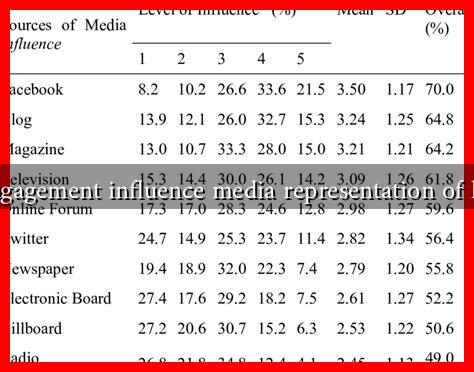-
Table of Contents
How Audience Engagement Influences Media Representation of Hijab-Wearing Women
The representation of hijab-wearing women in media has been a topic of significant discussion and debate. As societies become increasingly interconnected through digital platforms, audience engagement plays a crucial role in shaping how these women are portrayed. This article explores the dynamics of audience engagement and its influence on media representation, highlighting the importance of diverse narratives and the impact of social media activism.
The Power of Audience Engagement
Audience engagement refers to the ways in which viewers, readers, and listeners interact with media content. This interaction can take various forms, including comments, shares, likes, and discussions. The rise of social media has transformed audience engagement, allowing individuals to voice their opinions and influence media narratives more than ever before. Here are some key aspects of audience engagement:
- Feedback Mechanisms: Social media platforms provide immediate feedback, allowing audiences to express their approval or disapproval of representations.
- Community Building: Online communities can form around shared experiences, leading to collective advocacy for more accurate portrayals.
- Content Creation: Audiences are not just consumers; they can also become creators, producing their own content that challenges mainstream narratives.
Shifting Narratives Through Social Media
Social media has become a powerful tool for hijab-wearing women to share their stories and challenge stereotypes. Platforms like Instagram, Twitter, and TikTok allow these women to present their identities on their own terms, countering the often monolithic portrayals found in traditional media. For instance, the hashtag #HijabFashion has gained popularity, showcasing the diverse styles and personal expressions of hijab-wearing women around the world.
One notable example is the work of influencers like Nura Afia, who uses her platform to promote positive representations of hijab-wearing women. By sharing her fashion choices and lifestyle, she challenges the stereotype that hijab-wearing women are oppressed or lack agency. This shift in narrative is crucial, as it allows for a more nuanced understanding of the hijab and its significance in different cultures.
Case Studies: The Impact of Audience Engagement
Several case studies illustrate how audience engagement has influenced media representation of hijab-wearing women:
- “The Muslimah Who Wears a Hijab” Campaign: This campaign featured hijab-wearing women from various backgrounds sharing their stories. The positive audience response led to increased media coverage that highlighted their achievements and contributions to society.
- Documentary Series “Hijab: A Story of Faith and Fashion”: This series was developed in response to audience demand for more authentic narratives. It showcased the lives of hijab-wearing women, emphasizing their individuality and diverse experiences.
- Social Media Movements: Movements like #FreeTheHijab have gained traction, advocating for the rights of women to choose whether or not to wear the hijab. This has prompted media outlets to reconsider their portrayals and focus on empowerment rather than victimization.
Statistics and Trends
Research indicates that audience engagement significantly impacts media representation. A study by the Pew Research Center found that 62% of social media users believe that their engagement can influence how issues are portrayed in the media. Furthermore, 54% of respondents stated that they actively seek out diverse perspectives on social media, indicating a demand for varied narratives.
Conclusion: The Future of Representation
As audience engagement continues to evolve, its influence on media representation of hijab-wearing women will likely grow. The power of social media allows for a more diverse range of voices to be heard, challenging stereotypes and promoting understanding. By actively participating in discussions and sharing their stories, hijab-wearing women can shape their narratives and influence how they are represented in the media.
In summary, audience engagement is a vital force in transforming the media landscape. It empowers hijab-wearing women to reclaim their identities and advocate for more accurate representations. As we move forward, it is essential for media creators to listen to their audiences and embrace the rich diversity of experiences that hijab-wearing women bring to the table.


